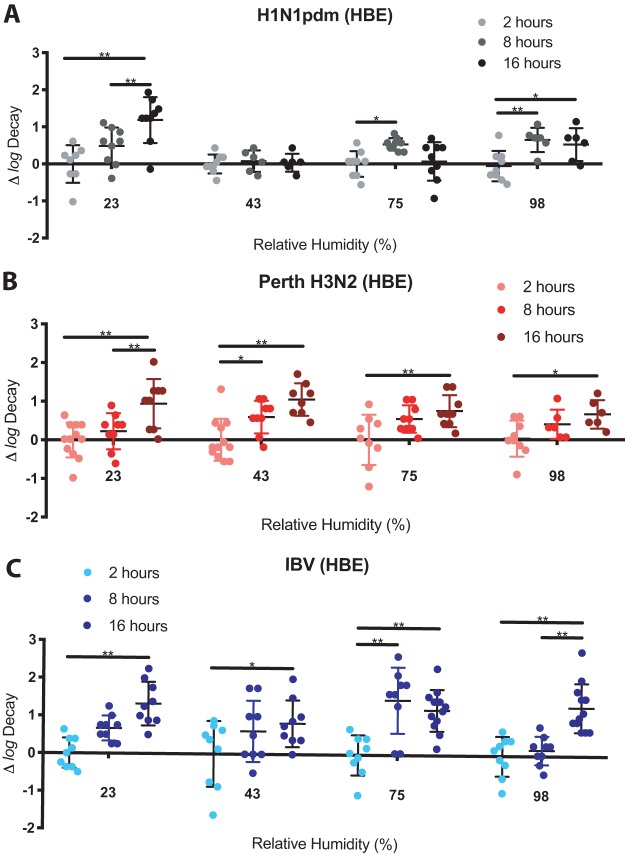FIG 4.
The rate of decay of seasonal IV depends upon both RH and virus strain background. Droplets containing HBE cell-grown H1N1pdm, Perth H3N2, or IBV were exposed to four different sets of RH conditions for 2, 8, and 16 h. The rate of decay (Δ log decay) was quantified as the difference of the log decay level at each RH level from the mean log decay level at 2 h for each virus. (A) The rate of decay of H1N1pdm increased significantly from 2 to 16 h at 23% and 98% RH. However, at 43% and 75% RH, the Δ log decay remained fixed for up to 16 h, indicating that the virus was highly stable under these conditions. (B and C) Δ log decay of HBE cell-grown Perth H3N2 (B) and IBV (C) increased significantly from 2 to 16 h under all four sets of RH conditions tested, indicating increased sensitivity to RH over time compared to H1N1pdm. Data were compiled from results determined for viruses grown in at least 3 HBE cell lines and are presented as individual values (symbols). Error bars represent means ± standard deviations. Asterisks indicate significantly different mean levels of log decay over time, as determined by two-way ANOVA, and adjusted P values are reported using Bonferroni’s correction for multiple comparisons (*, P < 0.05; **, P < 0.01).

